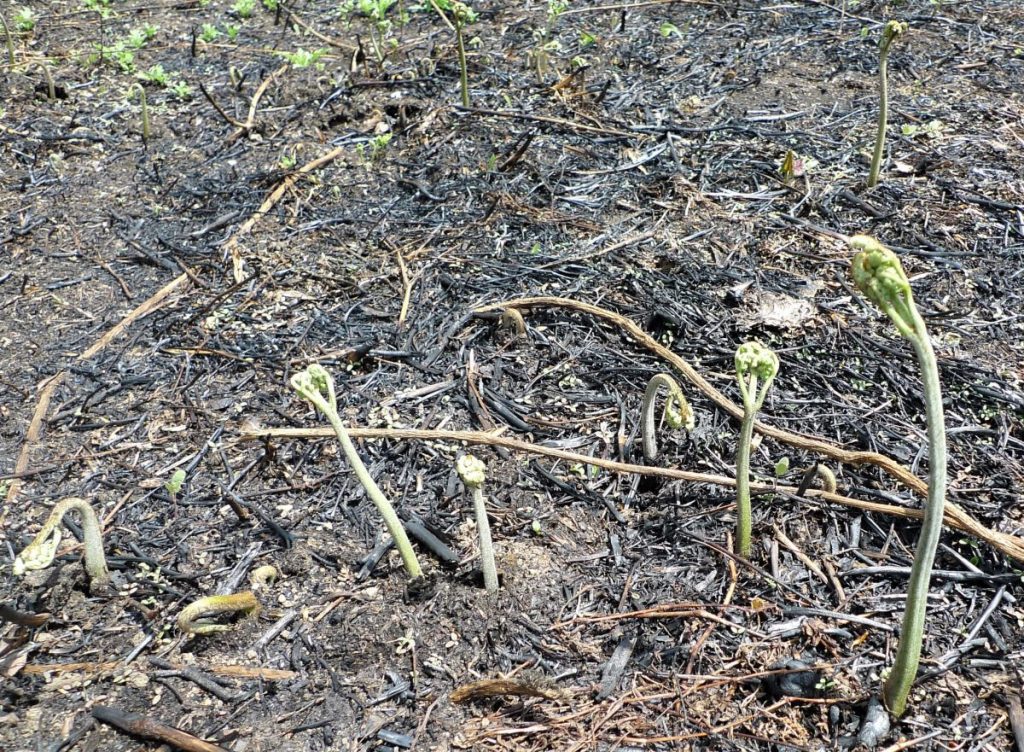
Area burned by a wildfire in a mountain village in Akita Prefecture on April 15 sprouting new life on May 1. (©Sankei by Tomoaki Yatsunami)
Read the full story on Japan 2 Earth - Spring Wildfires: How Depopulation and Aging Threaten Satoyama Landscapes
After the snow melts in Akita Prefecture in Northern Japan comes a season of frequent spring wildfires. Most occur on fallow farmlands or grassy areas in the mountains. Passersby or residents notice the smoke and report it. Fires breaking out in uninhabited places might seem mysterious. But in reality, the root cause of the fires is depopulation and aging in rural areas. The remaining residents are unable to carry out adequate fire prevention measures during the burning of underbrush. As such, traditionally managed satoyama landscapes are overgrown and on the verge of disappearing.
Rapid Spread of Dry Grass Fires
On April 15, approximately 45,000 square meters of dry grass, including communal lands, were burned in a mountain village on the slopes of Mount Chokai. It took five hours and the combined efforts of 11 fire trucks and all available fire brigade members to extinguish the blaze.

"A young, inexperienced person set fire to dry grass to promote the growth of edible wild plants. We had less snow this year so there was plenty of standing dry grass, and the fire spread quickly. Normally, no one would start a fire in such conditions," a local woman recounted. "Last year, an elderly person tried to burn dry grass and ended up burning his truck and the neighboring mountain," she added.
A Nationwide Problem in Spring
According to the Akita Prefectural Police, there were seven wildfire incidents in the prefecture on April 15, including the one above. The total for April alone was 64 fires. Over the last few years, some years have been worse than others. There were 105 incidents in 2019, but only 58 in 2021. Most of these fires occur in March and April, often resulting in damage to farm buildings and injuries to people involved.
Continue reading the full story on Japan 2 Earth to learn more about risks to Japan's rural satoyama landscapes.
And find more great articles on the environment and the challenges of achieving the SDGs on our affiliated website Japan 2 Earth (J2E), sparking a transition to a sustainable future.
RELATED:
- Horses Provide Healing and Business Opportunities for Regional Revitalization
- NTT Bets on Technology and Agriculture in an Aging Society
- How Innovative Students Used Tech to Drive Regional Revitalization in Saikai City
(Read the article in Japanese.)
Author: The Sankei Shimbun








